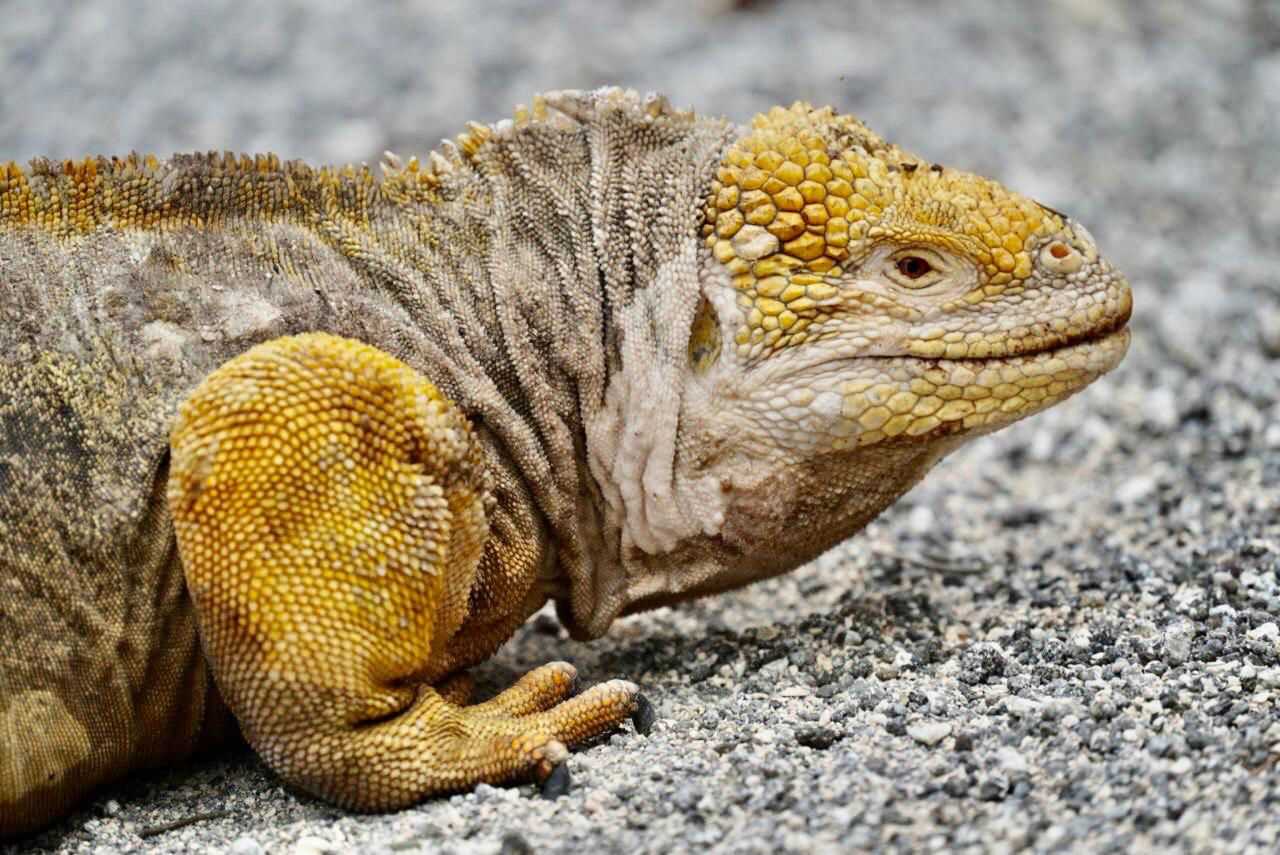Isabela Island is by far the largest in the Galapagos archipelago with its total area comprising 50 percent of the island. Isabela is home to the most incredible endemic species, and it has five active volcanoes. Wolf Volcano, one of the most active, is currently erupting. Lava is visible from the eastern side of the island.
After breakfast, we explored Urbina Bay. As the Zodiacs pulled onto the black landing beach, the sun cast a beautiful light onto the green vegetation. Conditions were perfect for photography and hiking. Donning our hiking shoes and leaving the sand behind, we took to a trail that led us inland onto flat terrain full of vegetation. We saw many muyuyu trees, poison apple trees and yellow cotton flower bushes. We quickly spotted our first giant tortoise of the expedition, calmly resting on the side of the path. The tortoises eventually climb to the highlands of Alcedo Volcano, and they return to the lowlands to nest or drink from cacti during the dry season. Walking through the forest, we saw two more tortoises, adult males with dome-shaped shells. We also came across yellow-colored land iguanas as we walked. Underfoot, we observed petrified barnacles, sea worms, shells and sea urchins—all mute witnesses of the sea uprising that occurred in the 1950s. This uprising lifted what was once the ocean floor to the surface we were standing on. At the end of the hike, we enjoyed a nice swim on the beach before returning to National Geographic Endeavour to move to our next destination, Tagus Cove.
While National Geographic Endeavour took us back north, our guests had time to enjoy traditional Ecuadorian food; typical dishes from the coast and highlands were served, and we savored the best of Ecuadorian cuisine.
Home to buccaneers and whalers and a refuge for pirates, Tagus Cove is one of the most historical locations in the entire archipelago. Our first excursion was deep water snorkeling around eroded tuff cones of the island. As we came into the water, the marvels of the ocean were revealed to us. Colorful fish surrounded us, while green sea turtles swam indifferently beside us. We admired this gentle and beautiful species. Penguins and flightless cormorants, flightless birds, offered the most impressive shows. They practically flew through the water around us to catch some fish.
We completed our day of exploration with two activities. One group of guests took an invigorating hike up to the rim of a tuff cone overlooking Darwin Lake and beyond. Other guests enjoyed long Zodiac rides to admire the coastlines of Isabela and Fernandina. The setting sun and calm waters were spectacular; we observed trees on the highest hills glow red in the fading light. It was a good ending to a day spent in this magical place.







